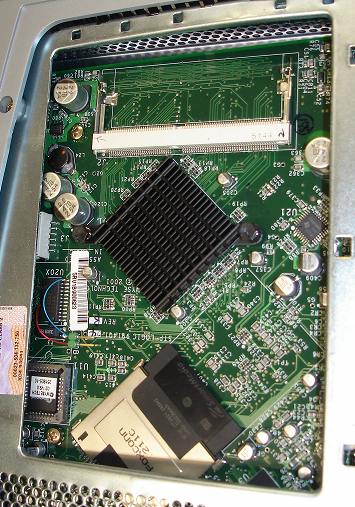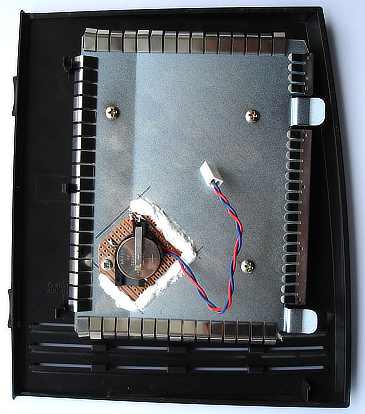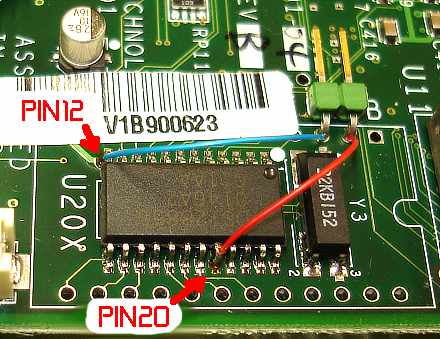T20 Clock Battery
Note: This page does not constitute instructions as to how to install a battery in a T20 - it is merely a record of what I did.
Don't try this unless you know what you're doing.
Installation of 3V battery for Real-Time Clock (RTC). Not recommended for people without past soldering experience! (although, if you soldered to places other than pins of the surface-mount RTC chip, it wouldn't be very hard)
The battery is positioned to line up with the open space in front of the SmartMedia card (marked on the pcb with a white rectangle, where the card slides out for removal) - this gives the most headroom for the battery.
The pcb has to be removed from the case to do the soldering. The only screws that aren't completely obvious to remove are the nuts on the sound connectors and the VGA connector, and they're pretty obvious!
R85 and R85 need to be removed. (on bottom of the pcb - they're under where the RTC chip (U20X) is)
Battery connector is soldered into U20B pins 2 and 3 (these are no-connect pins) and wired up to the battery pins of U20X - positive to U20X.20 and ground to U20X.12
Mounting the battery connector firmly has turned out to be a good thing, because every time I open the case I forget about the battery cable and accidentally pull it off the connector, which could be destructive (eventually) if it weren't soldered down.
Positive could be connected to the junction of removed resistors R85/R86 instead (easier to solder to) and ground could be connected lots of different places... (I haven't checked those locations - I'm just going from memory... must check, sometime...)
Battery holder (for a CR2032 battery) is attached to the case cover.
I replaced one of the 4 screws (holding the metal to the plastic) with a longer one, along with a good blobbing of white neutral-cure silicone to make sure it couldn't move.
The battery holder is one I salvaged from my old Pentium 90MHz machine (which I paid rather a lot of money for, when it was new).
If running DamnSmallLinux, a more comprehensive version of hwclock is required than the one that is part of busybox. I grabbed a copy from Debian Lenny.
Thanks to Gary for figuring out that the T20 has an RTC at all! (who would have guessed that Wyse would put one on the board but with no battery connected?)




